Planting for deer can be hard sometimes. You read all the books, buy “deer-resistant” plants, and the buggers still munch everything to the ground and give you that blank-eyed “what? I’m a deer!” stare when you shake your fist at them. No, it doesn’t always go as smoothly as the books would have you believe.
But some plants are more deer-resistant than others. And the types of plants I’ll discuss below are generally left unbothered, even in that initial “hmm, it’s a new thing, is that tasty?” stage. And even if you only used the exact set of species I’m suggesting below, there are so many colors and textures available of these types of plants that you could create any number of design schemes from them. Shall we start?
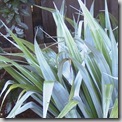 |
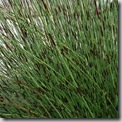 |
 |
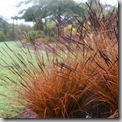 |
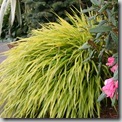 |
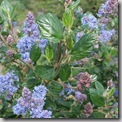 |
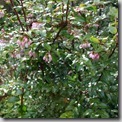 |
 |
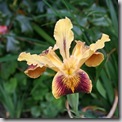 |
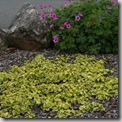 |
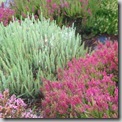 |
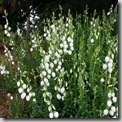 |
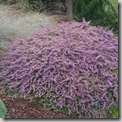 |
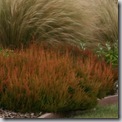 |
 |
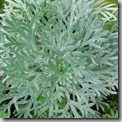 |
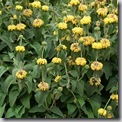 |
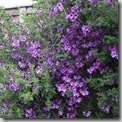 |
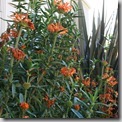 |
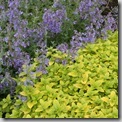 |
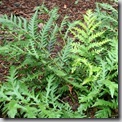 |
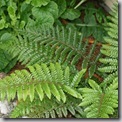 |
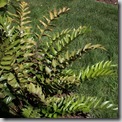 |
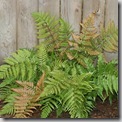 |
 |
Ornamental grasses:
I have never seen a deer eat ornamental grasses. That’s not to say they don’t do it, but I think the fact that grasses are pretty fibrous and not too high in moisture makes them an unattractive snack. Plus, there are generally a lot of softer grasses to eat out in the wild, so for most deer, the idea of traipsing into your yard, with all the weird sounds and smells, to eat something they can chomp in the relative safety of the wild just seems like a dumb idea to them.
You can try any ornamental grass, but the driest, most fibrous ones will be the most deer-resistant choices.
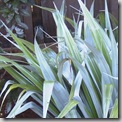 |
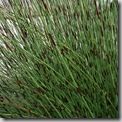 |
 |
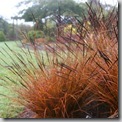 |
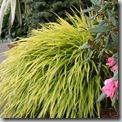 |
(Click the photos to see them larger.)
From left:
Silver Spear Astelia, Astelia chathamica ‘Silver Spear’, is a great plant for full sun or partial shade (4 hours or more of direct sunshine). The silvery-blue leaves shimmer in the light and the plant has a bold, architectural look. I adore these with black plants or black berries. 4′ tall by 5′ wide.
Cape Rush, Chondropetalum tectorum, is an evergreen rush with deep green foliage and dark brown papery sheaths at the stem joints. It has a strong presence in the landscape, yet rustles in the wind and looks airy rather than poky. Can take wet soils, and reaches 5′ tall by 7′ wide. Full sun to partial shade.
Burgundy Festival Grass, Cordyline ‘Festival Burgundy’, has a finer appearance than most Phormiums do, yet reaches a similar size in the landscape, about 5-6′ around. They prefer well-drained soil and full sun, but are otherwise easygoing plants that go well with almost anything. The white flower floofs bring a gentle textural contrast to this wide-leaved plant.
Red Hook Sedge, Uncinia uncinata ‘Red’, is an evergreen grass that can take damp, boggy soils or regular landscape conditions with ease. It’s as happy in full sun as it is in partial shade, and the black flowerspikes add a fun contrast to the glossy orange foliage. To 18″ tall and wide.
Japanese Forest Grass, Hakonechloa macra ‘Aureola’, is one that my landscape designer friends are all groaning about right now. Yes, guys, you may have seen this grass once or twice before. But the reason it’s so popular is because it’s of the awesome.
It’s happy in sun or shade on the coast (inland peeps should use it in shadier spots), has a soft appearance and cheerful color that goes with anything, and it’s easy to grow. To 18″ tall and about 4′ wide; you can plant them in gorgeously broad swathes with other shade-loving perennials or shrubs.
Native plants:
Much as deer don’t actually need to be smart to live long and happy lives, they aren’t stupid either. They’re not going to brave your dogs and toddlers to eat something they can get down the road with a lot less stress.
While natives aren’t universally disgusting to deer, they just don’t seem to hold enough appeal to go out of their way for. And since deer are creatures of habit, it’s a very good thing indeed if they find your landscape boring.
That’s not to say you should find your landscape boring! Designing with natives is like designing with any other type of plant – the end result reflects the designer more than the plant. Choose natives for their shape, texture and colors, and feel free to experiment with varieties with different colored flowers or variegated foliage.
You’ll have the best success with deer-resistance if you go for plants that are actually found locally to you. Look at what’s growing naturally and choose exciting varieties of those plants. These are a few natives to my Northern Cali area.
 |
 |
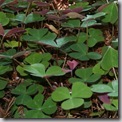 |
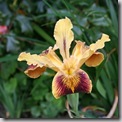 |
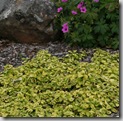 |
From left:
California lilac, Ceanothus ‘Ray Hartman’, is a large shrub or small tree which can be purchased in a multi-stemmed form or trained with a single tree trunk. They like good drainage and full sun, and will feed many happy pollinators with their flowers, and birds with their seeds later in the season.
Evergreen Huckleberry, Vaccinium ovatum, is a great standby plant for Pacific Northwest gardens. It loves our redwood forests and feeds many kinds of wildlife, even providing nesting spots and cover for birds. The black berries are pleasantly shiny, and they’re edible to humans as well as birds.
Redwood sorrel, Oxalis oregana, is a sturdy groundcover that’s almost TOO easy to grow. Only way you can f*** this one up is by planting it right next to some delicate beauty who won’t appreciate being overwhelmed by it.
But if you have a shady area that nothing will grow in, try establishing a section of sorrel as a groundcover and let this lovely plant take over. It will take somewhat dry shade once established and can tolerate root competition from redwoods and other vigorous plants.
Douglas iris, Iris douglasiana, comes in a variety of flower colors and shapes and is an easy landscape plant. It’s happiest in partial shade, but is forgiving of both too much sun and too much shade once established. The yellow-maroon one above is a Pacific Coast hybrid.
Variegated California lilac, Ceanothus ‘Diamond Heights’, is a low-growing golden groundcover which reaches about 6″ tall and 5′ wide. I’ve never seen one bloom in the years I’ve grown them, but they make a cheerful evergreen groundcover for areas with good drainage.
Heathers of every stripe:
Summer- and winter-blooming Erica, large-flowered Daboecia with its long bloom season, and the wild foliage colors and interesting habits of Calluna give heaths and heathers a lot of versatility in the garden. They’re evergreen, prefer acid soil and heavy applications of compost and mulch when planted, but are otherwise unfussy plants for a sunny spot.
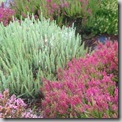 |
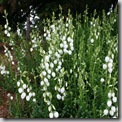 |
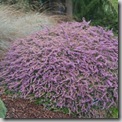 |
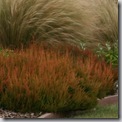 |
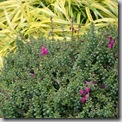 |
From left:
Silver Scotch heather and bright pink Scotch heather, Calluna vulgaris ‘Velvet Fascination’ and ‘Dark Beauty’, are late summer- to early fall-blooming plants which reach about 2′ tall and wide. Like all Scotch heathers, they need yearly pruning right after bloom to stay looking full.
White Irish heath, Daboecia cantabrica ‘Alba’, has crisp white blooms against deep green evergreen foliage. Irish heaths take more shade than most heaths and heathers, which generally prefer sun. They bloom from spring through fall, and if they get a bit ratty I give them a light shear in midsummer to encourage them to stay bushy and full. They get about 2′ tall and 3-4′ wide when happy.
Sister Anne Scotch heather, Calluna vulgaris ‘Sister Anne’, has soft grey-green foliage that spreads in a tight, low mound. While many of the super-low heathers give me performance issues or don’t seem as full as the upright varieties, ‘Sister Anne’ has a vigorous habit that always looks good.
Firefly Scotch heather, Calluna vulgaris ‘Firefly’, is a chameleon in the landscape. With bronze-orange foliage in summer that becomes vivid brick-red in winter, it looks great with grasses or herbs, or next to stonework. The mauve flowers in late summer are sparse and frankly unimpressive; I think they clash and often trim them off to enjoy the pure statement the foliage color makes.
Arielle Irish heath, Daboecia cantabrica ‘Arielle’, has the same large blooms and deep green foliage as other Irish heaths, with brilliant magenta blossoms spring through fall. It reaches about 10″ tall by 2′ wide, making it somewhat more petite than other Irish heaths.
Herbs and others with fragrant foliage:
Deer don’t really approve of strongly-flavored plants. Things like thyme, rosemary, and sage don’t hold the same appeal for them as they do for us. So as a rule of thumb, if you’ve chosen an herb or herb relative, and the foliage is thick, sappy, hairy, or highly fragrant, the deer probably won’t mess with it.
The caveat here is that once these guys are established (water in the first 2-3 summers), you should avoid giving them any more water or fertilizer than they really need, because the lusher the growth, the more diluted the scented oils become. A jolt of miracle-gro could make them soft and tasteless, and absolutely delicious to deer. Shade has the same effect; herbs should be positioned in direct sunshine.
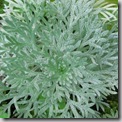 |
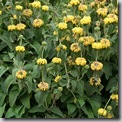 |
 |
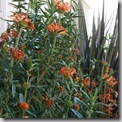 |
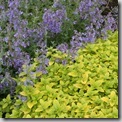 |
From left:
Wormwood, Artemisia, has long been known for its place in absinthe, where it adds a delicious herbal note. Most artemisias are fast-growing and can be pruned vigorously to bare wood once a year to keep them compact. ‘Powis Castle’ is the most common garden variety.
Jerusalem sage, Phlomis fruticosa, grows quickly to 5′ tall and wide. It has masses of blooms in spring, then comes back with an additional show in late summer. The one thing I hate about them is that their leaf undersides have a thick hairy substance on them, so when I prune them, I am generally hacking like an old smoker within a few minutes. But hey, wear a mask and it’s a pretty cool shrub.
The Vick’s Vapo-Rub plant, AKA Australian Mint Bush or Prostanthera rotundifolia, smells like a pleasantly minty stoner. Once you get used to the pungent undertone of marijuana, the minty herbal topnotes are actually quite nice-smelling, and most people don’t find the fragrance of the foliage objectionable. But the deer obviously don’t go in for that kind of thing.
This is a fast-growing shrub to about 6′ around, and it doesn’t take pruning well. But if you give it a bit of room, it has a gracefully loose upright habit, attractive deep green leaves, and has the sweetest covering of purple blooms in late spring. It’s also evergreen, so makes a great fast-growing low screen.
Lion’s tail, or Leonotis leonurus, is a cheerful orange fall bloomer that seems to go with most types of planting. Mediterranean themes, cottage gardens, and colorful foliage displays all look good with this plant. It gets about 5′ tall and 4′ wide. There’s a white version called ‘Alba’, but as Amy Stewart points out, it’d be a bit of a disappointment to turn a lovely cheerful plant like this into a ghostly thing with no color. Just wouldn’t feel right.
Catmint and golden oregano, Nepeta x faassenii and Oreganum vulgare ‘Aureum’, make a natural pairing. Both reach about 18″ tall and 3′ wide, both look particularly fresh and bloomy around mid-summer, and both are easy to grow in a garden with some sun.
You can use golden oregano in the same way as normal oregano, and catmint’s pretty useful too, that is, if you like cats. I have trouble pruning them each year in my garden, because as soon as I crush a bit of catmint foliage, someone’s always twining around my hedgers and purring.
Ferns:
What more need be said of ferns? They’re lovely shade plants, look great massed, don’t clash with anything, and if given regular water to get established, they’re easygoing plants that are hard to screw up.
 |
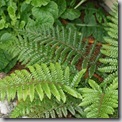 |
 |
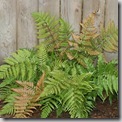 |
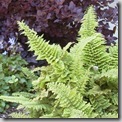 |
From left:
Giant chain fern, Woodwardia fimbriata, is a Pacific Northwest native to 4-5′ tall. I’ve had success with it under redwoods and other trees; it seems to do well even when competing for nutrients. It also performs well in boggy conditions. It doesn’t enjoy frost, though, so keep it close to trees and shrubs to protect it from winter’s worst.
Tassel fern, Polystichum polyblepharum, is my favorite fern ever. It’s got an elegant shape and a very nice shine to the leaves, and the deep green in tinged with a gentle olive tone that looks so classy next to traditional shade perennials. Looks great potted, too.
Holly fern, Cyrtomium falcatum, is all architectural and chic. No fluffy softness from this fern, no way, it’s all piercings and Harleys and leather. It fits right in with black plants and broody burgundies.
Autumn fern, Dryopteris erythrosora, seems to have its seasons confused with its orangey new growth in spring. No matter, it’s adorable and is a great way of continuing an orange or bronze theme into the shady part of your garden beds. This is one of the few ferns that will tolerate a half day of sunshine, so it’s good one for the edges of your shade planting.
Alaskan fern, Polystichum setiferum, is all frou-frou fluffiness. If ferns seem too stiff or too boldly-outlined for you, Alaskan fern may be your best bet. It’s surprisingly tough; I have seen one sited next to the bottom of a downspout, where it’s ignored and unirrigated in summer and deluged in winter.
Don’t forget to read the basic tips for dealing with deer, since even with deer-resistant plantings, it’s important to follow a few guidelines to make sure you have success.
15 responses to “Deer-Resistant Plantings You Can’t F*** Up”
Hi!
Even though we’re in different regions, we have the same problem. I’ve been growing a deer resistant garden since 2005 and have been pretty successful through my own experimentation. When hungry enough, they’ll eat the tips off my yucca every February!
I grow agastache, salvia, nepeta, echinacea, Russian sage, buddleia, leucanthemum, garden mums, ornamental grasses, gladiolus, verbena, gaillardia, monarda and much more…
Freda Cameron
Defining Your Home, Garden & Travel blog
Chapel Hill, North Carolina
Wow, Freda! Those are some hungry deer to eat the tips off your yucca!
Thanks for the awesome list of plants that work for you! Of your list, I’ve had success with leucanthemum, salvia, nepeta, Russian sage, mums, grasses, glads, verbena, and gaillardia. I haven’t had success with agastache, monarda and echinacea just because our climate is so everlastingly wet all winter that they just seem to rot out. But I’d believe the deer don’t favor them.
This is a very nice article. Not the usual deer article. I especially am glad to find the info on the fern. I have looked for information about ferns that are on the small side as in opposite of the common woods, road variety. thanks so much.
and yes I been complaining a little or whining about the deer lately.
Jo, I am with you, I just adore ferns. And your beautiful blog posts are of great service to those gardening in deer country! I love all of the photos… Very drool-worthy!
Gen,
Here in southwestern CT, where we are reported to have 6 -7x more deer per square acre than other areas of CT, it can be difficult to find reliably deer-resistant plants. I’m reluctant to tell you what works in my garden (do deer get the internet??) but here goes (knock on wood…) Hakonechloa is a safe bet as are other ornamental grasses. As Freda noted, agastache, nepeta and buddleia also seem to be unappetizing here, too. I’ve also had good luck with vaccinium, clethra and japanese maples.
[…] plants that do really well on the West coast, head on over to my friend Gen’s blog at North Coast Gardening – between this book and Gen’s post you’re definitely […]
In the SF East bay, deer happily much Ceanothus. We no longer plant them in deer prone locations.
Especially Ray Hartman ceanothus above all others! That one is deer candy!! Here in the hills above Sebastopol, we have to cage them until they are above 8′ tall and then my “deer gardeners” will prune them into tree forms for me.
LOL, here they aren’t touched, it just goes to show that deer don’t read these “deer-resistant planting” lists! It’s always a good idea to run any potential plantings by a local landscaper or nursery worker before investing in them to see what the local consensus is.
Regarding deer resistance; I was told recently to sprinkle red pepper around the plants. It won’t disturb the plants and the deer dislike the aroma. Buy a big bottle of it and after a rainfall, resprinkle.
For slugs, crushed eggshells work well; also of course, gravel and I’m hoping bark, since I just bought a large bag of it for that purpose.
I am told slugs don’t like coffee grounds, of which I have a lot of. If you don’t, you can always get some from Starbucks or similar, most likely for free. I am using some for my hosta which I’m hoping is deer resistant as well. Just haven’t used it long enough to tell.
Deer won’t touch agaves, mahonia, yuccas, bananas, pineapple, palms or artemesia but hostas, hydrangeas, day lilies, purple heart & roses are their absolute favorites. We live in deer-infested area of SC & I’ve had to change my thinking about landscaping. I don’t like buying expensive plants for deer fodder. Think tropical or desert & you should be ok. Just make sure they are cold-hardy & suitable for your zone.
Thank you for including pictures of the recommended plants! That really helps a brand new gardener like me.
Also the thicker leaved broadleaf evergreens shrubs and trees. I didn’t see any damage to smaller southern magnolia adjacent to a state park full of bambis. Obviously go for the thickest leaves on any species you try. I thought Prague Viburnum was a winner, though someone disputed that claim.
Think: Hairy leaves, thick leaves, sharp leaves, pungent
I love Montgomery Dwarf Spruce as an anchor in a deer resistant garden..
Best advice: See what has worked for your neighbors.
I’m new to deer gardening and the first time the deer mowed down my roses I took drastic measures. I appreciate all the plus plus plant choices but I also planted a border of offset fencing using garden stakes and fishing line here in Maine. So far it is working. I also am using a net wrapping around plants during the off season and I plant cross over shishkabob sticks over bulb plantings and other planting to keep squirrels etc from digging them up. All methods have been tested in other locations but the fishing line is a new addition. Thanks Debbie